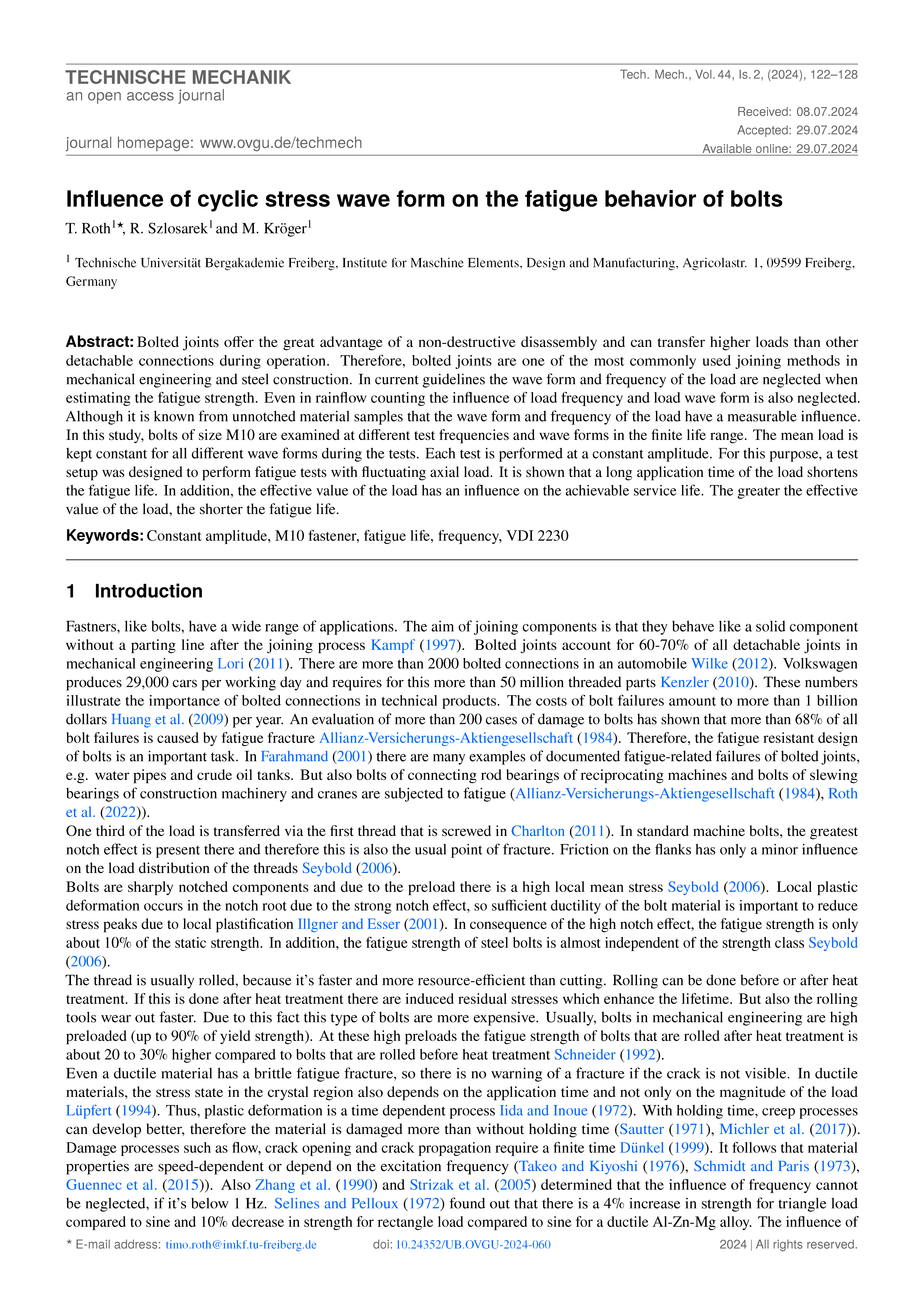Influence of cyclic stress wave form on the fatigue behavior of bolts
DOI:
https://doi.org/10.24352/UB.OVGU-2024-060Keywords:
Constant amplitude, M10 fastener, fatigue life, frequency, VDI 2230Abstract
Bolted joints offer the great advantage of a non-destructive disassembly and can transfer higher loads than other
detachable connections during operation. Therefore, bolted joints are one of the most commonly used joining methods in
mechanical engineering and steel construction. In current guidelines the wave form and frequency of the load are neglected when
estimating the fatigue strength. Even in rainflow counting the influence of load frequency and load wave form is also neglected.
Although it is known from unnotched material samples that the wave form and frequency of the load have a measurable influence.
In this study, bolts of size M10 are examined at different test frequencies and wave forms in the finite life range. The mean load is
kept constant for all different wave forms during the tests. Each test is performed at a constant amplitude. For this purpose, a test
setup was designed to perform fatigue tests with fluctuating axial load. It is shown that a long application time of the load shortens
the fatigue life. In addition, the effective value of the load has an influence on the achievable service life. The greater the effective
value of the load, the shorter the fatigue life.

Downloads
Published
How to Cite
Issue
Section
License
Copyright (c) 2024 Timo Roth, Robert Szlosarek, Matthias Kröger

This work is licensed under a Creative Commons Attribution-ShareAlike 4.0 International License.




